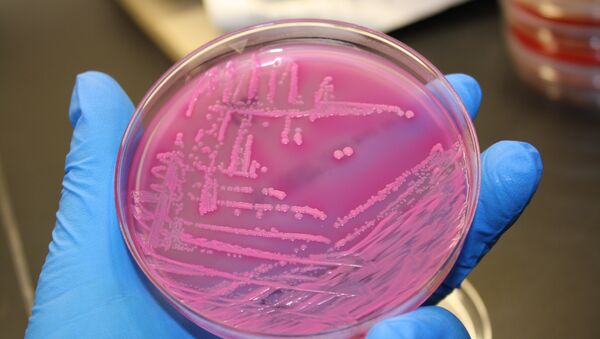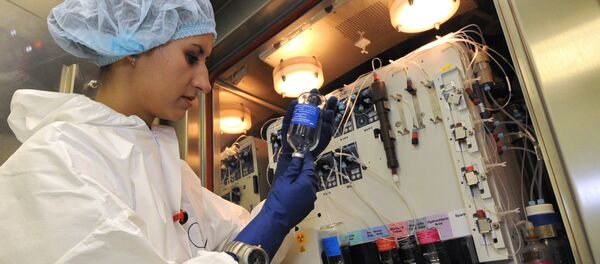They created gold nanoparticles in the laboratory by dissolving gold, reducing the metal to smaller pieces that can only be measured in nanometers, or one billionth of a meter.
A human hair measures roughly 50,000 to 100,000 nanometers in diameter, and fingernails grow one nanometer every second.
The researchers made the miniature gold particles into a disc shape measuring a few hundred nanometers in diameter; they were shaped with pores, giving them a sponge-like porous quality that helps increase their heating efficiency and gives them extra stability.
The scientists then placed three kinds of bacteria cells on the tiny discs: E. coli and Bacillus subtilis, which grow best in moderate temperatures, and Exiguobacterium, which is found in a wide range of temperatures, including glaciers in Greenland and hot springs in Yellowstone National Park in the US.
A thermal imaging camera showed that the surface temperature of the particles reached temperatures up to 180 degrees Celsius almost instantly, and all of the bacterial cells were killed within 25 seconds.
The scientists explained that the technology could have implications for the prevention of some common infections, for example those which can be contracted in hospitals.
"The risks of contracting a hospital-acquired (nosocomial) infection has long been a real threat and the rate can be as high as 13.5 percent in certain countries," the researchers wrote in their paper, published in Optical Materials Express.
The evolution of bacteria to resist antibiotics makes it essential to develop reliable and effective methods to stop the survival and proliferation of bacteria, such as exposure of laboratory tools and medical instrumentation to high temperatures.
These methods are effective but require long durations of sterilization, from several minutes to hours.
"We showed that all of the bacteria were killed pretty quickly… within 5 to 25 seconds. That's a very fast process," explained Wei-Chuan Shi, coauthor of the paper.
As well as using the gold nanoparticles to sterilize equipment, the scientists are exploring the possibility of integrating the nanoparticles with filter membranes in small water filters, to help improve water quality.



